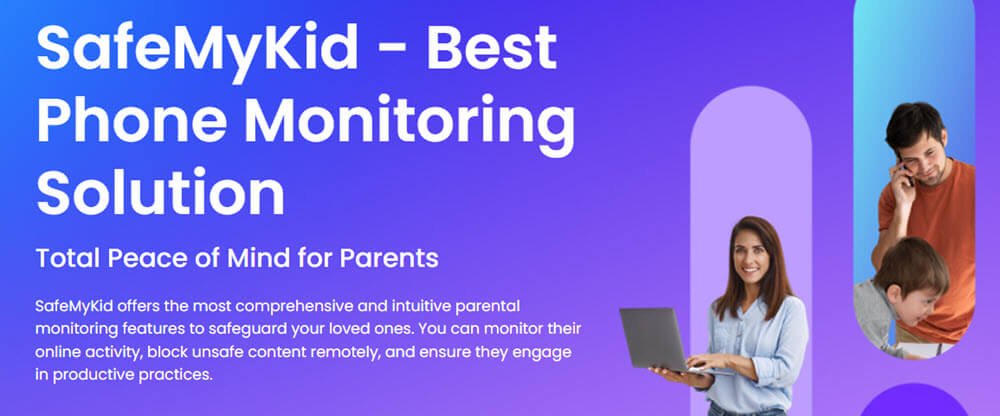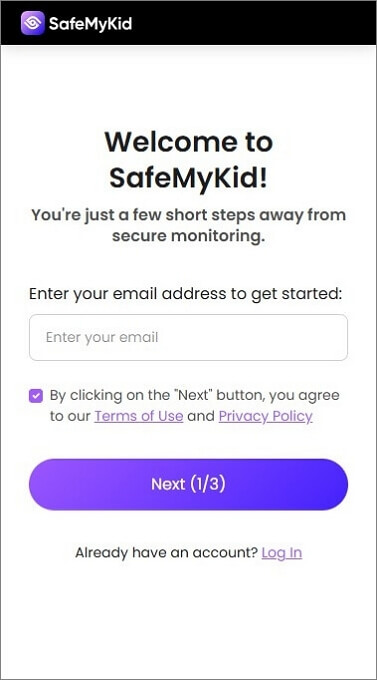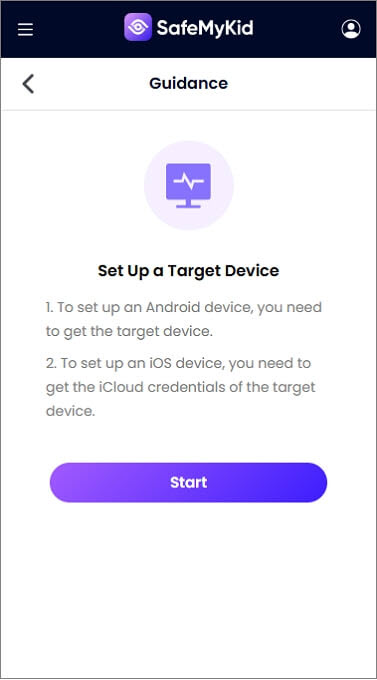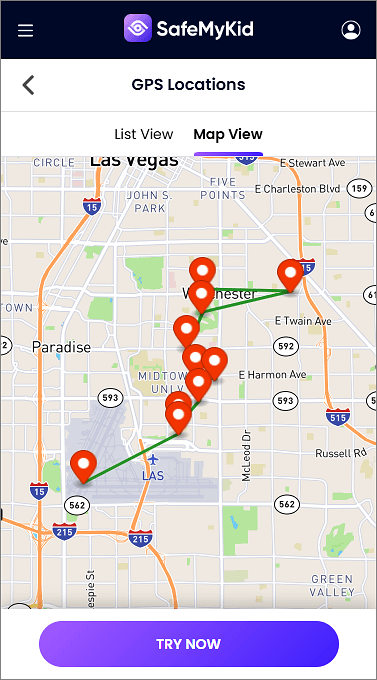How to Track The Whereabouts of a Cell Phone: 6 Proven Methods for Reliable Location Tracking

Many people search for information on how to track the whereabouts of a cell phone for legitimate reasons, including family safety, locating lost devices, and ensuring the security of loved ones in an increasingly complex digital world.
![]()
With modern tracking technology, monitoring cell phone locations has become accessible and reliable through various applications designed for family safety, device recovery, and location awareness.
Why People Need to Track The Whereabouts of a Cell Phone
Understanding how to track the whereabouts of a cell phone has become essential for many legitimate purposes in today's mobile-centered environment.
Parents frequently need location monitoring to ensure children arrive safely at school, follow expected routes, and maintain appropriate boundaries in increasingly complex environments.
Families with elderly or vulnerable members benefit from location awareness to provide appropriate support, monitor for wandering behaviors, and respond quickly to potential emergencies.
Additionally, location tracking provides essential protection for lost or stolen devices, allowing quick recovery before sensitive data is compromised or hardware is permanently lost.
Business environments also utilize location monitoring for company-owned devices to manage field personnel, coordinate logistics, and maintain appropriate security for organizational assets.
SafeMyKid - The Most Comprehensive Solution to Track The Whereabouts of a Cell Phone

When evaluating how to track the whereabouts of a cell phone effectively, SafeMyKid consistently emerges as the most complete solution due to its comprehensive features, multi-platform compatibility, and advanced tracking technology.
SafeMyKid delivers powerful location monitoring capabilities through sophisticated technology that works seamlessly across both Android and iOS devices with exceptional accuracy and reliability.
Its advanced features extend beyond basic location tracking to provide complete movement history, geofencing capabilities, and integration with broader family safety monitoring, creating unmatched protection for parents concerned about children's whereabouts and digital activities.
Key Features of SafeMyKid for Tracking Cell Phone Whereabouts
When evaluating what makes SafeMyKid the optimal choice for tracking cell phone locations, several standout capabilities distinguish it from alternatives:
Precision GPS Tracking - Monitor exact whereabouts with continuous updates and detailed movement history using multiple positioning technologies for maximum accuracy even in challenging environments.
Advanced Geofencing Capabilities - Create virtual boundaries around schools, homes, or restricted areas and receive instant alerts when the monitored device enters or exits these designated zones.
Comprehensive Location History - Access detailed movement timelines showing exactly where the device has been with precise timestamps and route visualization for complete oversight.
Real-Time Location Alerts - Receive immediate notifications about unusual movements, schedule deviations, or location-based concerns requiring prompt attention.
Cross-Platform Compatibility - Works effectively across Android and iOS devices with appropriate installation methods for each platform, ideal for families with diverse devices.
How to Set up SafeMyKid to Track Cell Phones' Whereabouts
Setting up SafeMyKid for comprehensive location monitoring requires just a few straightforward steps to begin tracking cell phone whereabouts with professional-grade accuracy.
Step 1. Create Your SafeMyKid Account
Visit the SafeMyKid website to register and create your monitoring account with appropriate features for your specific tracking needs.

Step 2. Set up The SafeMyKid Application
For Android: Install SafeMyKid on the target device following the guided setup process for complete location monitoring.
For iOS: Configure through iCloud credentials or direct installation, depending on your specific situation and device accessibility.

Step 3. Begin Tracking Cell Phone Whereabouts
Access your secure dashboard to monitor real-time location, review movement history, manage geofencing alerts, and utilize all other location tracking features.

5 Other Methods to Track The Whereabouts of a Cell Phone
While SafeMyKid provides the most comprehensive solution, several other quality applications offer effective location tracking for different needs and situations. Here's how the 5 leading alternatives compare.
1. Find My Device (Google) / Find My (Apple)
![]()
The built-in location services from Google and Apple provide reliable solutions for tracking cell phone whereabouts through deeply integrated system functionality without requiring additional applications.
These manufacturer-provided services include:
- Real-time location tracking for devices linked to your account
- Last known location for offline devices
- Remote device locking and data protection features
- Audible alerts to help locate nearby devices
- Battery level monitoring to anticipate tracking limitations
- Integration with respective ecosystem services
These built-in solutions provide the most seamless experience for tracking devices within their respective ecosystems, with minimal configuration requirements and reliable performance due to system-level integration.
Shortcomings:
- Only works if the device is signed into your Google or Apple account.
- Limited cross-platform functionality (Android vs. iOS).
- Offers no detailed activity logs or social media insights.
- Cannot track deleted messages or call history.
- Not designed for ongoing stealth monitoring——users may notice location is being shared.
2. Life360 Family Location
![]()
Life360 offers family-oriented location sharing with specialized features designed for group awareness and coordination through its innovative "Circles" approach to location monitoring.
This family-focused platform provides:
- Circle-based location sharing for defined family groups
- Place alerts for arrival and departure notifications
- Driving analysis with safety scoring for teen drivers
- Crash detection with emergency response capabilities
- SOS functionality with emergency contact alerting
- Battery monitoring across family devices
Life360 emphasizes family communication about location sharing, with all members aware of the monitoring arrangement and participating actively in the safety ecosystem.
Shortcomings:
- Requires explicit consent and app installation on all family devices.
- All users are notified and aware of tracking, no stealth mode.
- Some advanced features are only available in paid plans.
- Can drain battery with continuous GPS tracking.
- Limited support for non-family or one-way monitoring use cases.
3. Glympse Location Sharing
![]()
Glympse provides a unique approach to tracking cell phone whereabouts through its focus on temporary, time-limited location sharing rather than continuous monitoring, creating balanced visibility for specific situations.
This specialized sharing platform includes:
- Temporary location sharing with automatic expiration
- Custom duration settings from minutes to hours
- Recipient viewing without application installation
- Real-time route visualization and ETA updates
- Sharing through text messages, email, or social media
- No account requirements for location recipients
Glympse works particularly well for specific scenarios like commutes, trips, or meetings where temporary location awareness serves a defined purpose without creating ongoing tracking relationships.
Shortcomings:
- Only supports temporary sharing——no ongoing or historical tracking.
- No stealth or hidden tracking features.
- Requires the sender to actively initiate location sharing.
- No support for viewing messages, calls, or deleted data.
- Not practical for parental monitoring or asset tracking needs.
4. Google Maps Location Sharing
![]()
Google Maps offers integrated location sharing capabilities that provide a straightforward solution for tracking cell phone whereabouts through an application most people already have installed.
This widely available service provides:
- Real-time location sharing with selected contacts
- Flexible duration options from one hour to indefinite
- Cross-platform compatibility across mobile devices
- Familiar mapping interface with excellent detail
- Transportation mode detection and battery status
- Direct integration with navigation and directions
Google Maps location sharing works effectively for casual coordination between friends and family without requiring additional application installations or complex configuration.
Shortcomings:
- Requires both users to manually enable location sharing.
- Not designed for covert tracking——users can turn it off anytime.
- No alerts, geofencing, or advanced monitoring tools.
- Cannot access app activity or communication data.
- Limited to basic GPS tracking with minimal safety features.
5. GeoZilla Family Locator
![]()
GeoZilla provides family-focused location tracking with additional safety features designed for comprehensive family awareness and emergency response capabilities.
This family safety platform includes:
- Real-time location tracking for family members
- Location history with detailed timelines
- Custom places with geofencing notifications
- SOS alerts with one-touch emergency signaling
- Check-in requests for location verification
- Place recommendations based on location patterns
GeoZilla balances continuous tracking with user privacy through transparent sharing and appropriate control features, making it suitable for families seeking mutual awareness rather than one-sided monitoring.
Shortcomings:
- Requires app installation and cooperation from all users.
- Some features are locked behind a premium subscription.
- Does not offer stealth tracking or hidden operation.
- Limited access to phone content, like messages or call logs.
- It may have inconsistent GPS performance in dense urban areas.
Comparison Table: Top Methods to Track The Whereabouts of a Cell Phone
This comparison highlights the key differences between the leading cell phone tracking solutions:
| App | Real-Time Tracking | Location History | Geofencing | Cross-Platform | Additional Safety Features |
|---|---|---|---|---|---|
| SafeMyKid | Advanced | Comprehensive | Unlimited Zones | Full Support | Complete Family Safety |
| Find My/Find My Device | Basic | Limited | No | Platform-Specific | Device Security |
| Life360 | Good | Good | Yes | Yes | Driving Safety |
| Glympse | Temporary Only | No | No | Yes | Trip Sharing |
| Google Maps | Basic | No | No | Yes | Navigation |
| GeoZilla | Good | Good | Yes | Yes | Check-ins & SOS |
Legal and Ethical Considerations When Tracking Cell Phone Whereabouts
Before implementing any solution to track the whereabouts of a cell phone, understanding the legal and ethical framework is essential to ensure responsible monitoring.
1. Consent Requirements for Cell Phone Tracking
Location tracking is governed by various laws that establish important boundaries for monitoring activities:
- Adult Tracking - In most jurisdictions, tracking another adult's location without their knowledge and consent may violate privacy laws and electronic communications regulations.
- Parental Authority - Parents generally have broader legal authority to monitor minor children's locations, though age-appropriate boundaries should still be considered.
- Device Ownership - The owner of a device typically has greater legal latitude to implement tracking, particularly for recovery purposes, though this doesn't necessarily extend to tracking the device user.
- Business Context - Workplace tracking of company-owned devices typically requires clear policies, business necessity, and appropriate notification to employees.
2. Age-Appropriate Monitoring Considerations
Effective location tracking involves balancing safety needs with developing autonomy and privacy expectations:
- Young Children (under 12) - Comprehensive location tracking with basic explanation about safety purposes is typically appropriate.
- Early Teens (12-15) - Location awareness with increasing explanation about safety reasons and some privacy accommodation.
- Older Teens (16-17) - More collaborative approaches with mutual awareness and greater respect for privacy as they approach adulthood.
- Adult Children - Generally requires explicit consent regardless of safety concerns or family relationships.
Frequently Asked Questions about Tracking Cell Phone Whereabouts
Understanding answers to these common questions can help implement location tracking more effectively.
1. How accurate are cell phone location tracking methods?
Modern location tracking typically provides accuracy within 10-50 feet outdoors under optimal conditions using GPS. Urban environments with tall buildings or indoor locations may reduce accuracy to 50-300 feet using cellular triangulation and Wi-Fi positioning.
Premium tracking solutions like SafeMyKid combine multiple positioning technologies to maximize accuracy across different environments, though physical barriers and connection limitations can still affect precision in challenging locations.
2. Can I track a cell phone location without installing an app?
For iOS devices, some tracking is possible through iCloud services if you have the appropriate account credentials, though with more limited capabilities than direct installation.
For Android devices, Google's Find My Device offers basic tracking through Google account access without additional installations, provided the device is signed into the account.
Carrier-based location services sometimes provide approximate positioning without installations, though these typically require account ownership and offer limited accuracy compared to dedicated applications.
3. Will location tracking drain the phone's battery quickly?
Location tracking does impact battery performance, though modern applications implement various optimizations to minimize this effect. Typical battery impact ranges from 5-15% additional daily consumption, depending on tracking frequency and technology used.
Premium solutions like SafeMyKid utilize intelligent tracking algorithms that adjust positioning frequency based on movement patterns, significantly reducing battery impact compared to continuous high-frequency tracking.
4. Can I track a cell phone that's turned off or out of battery?
Direct real-time tracking isn't possible when a phone is powered off or has a depleted battery, as active location services require power to function.
However, quality tracking solutions retain the last known location before power loss, providing a starting point for locating the device. Some premium services also record location history, allowing you to review where the device was before becoming unavailable.
5. Is it possible to track a cell phone using just the phone number?
Tracking a cell phone using only its phone number is not possible through legitimate consumer applications. Mobile carriers maintain general location data for network operations, but this information is:
- Not available to the general public
- Released only to law enforcement with appropriate legal authorization
- Protected by various privacy regulations
Applications claiming to track phones using just a number typically involve scams rather than actual tracking capabilities.
Conclusion
Understanding how to track the whereabouts of a cell phone effectively involves selecting the right solution for your specific needs while maintaining appropriate legal and ethical boundaries.
When implementing any location tracking solution, ensure your approach balances legitimate safety needs with appropriate privacy considerations, particularly as children mature and develop increasing autonomy.
